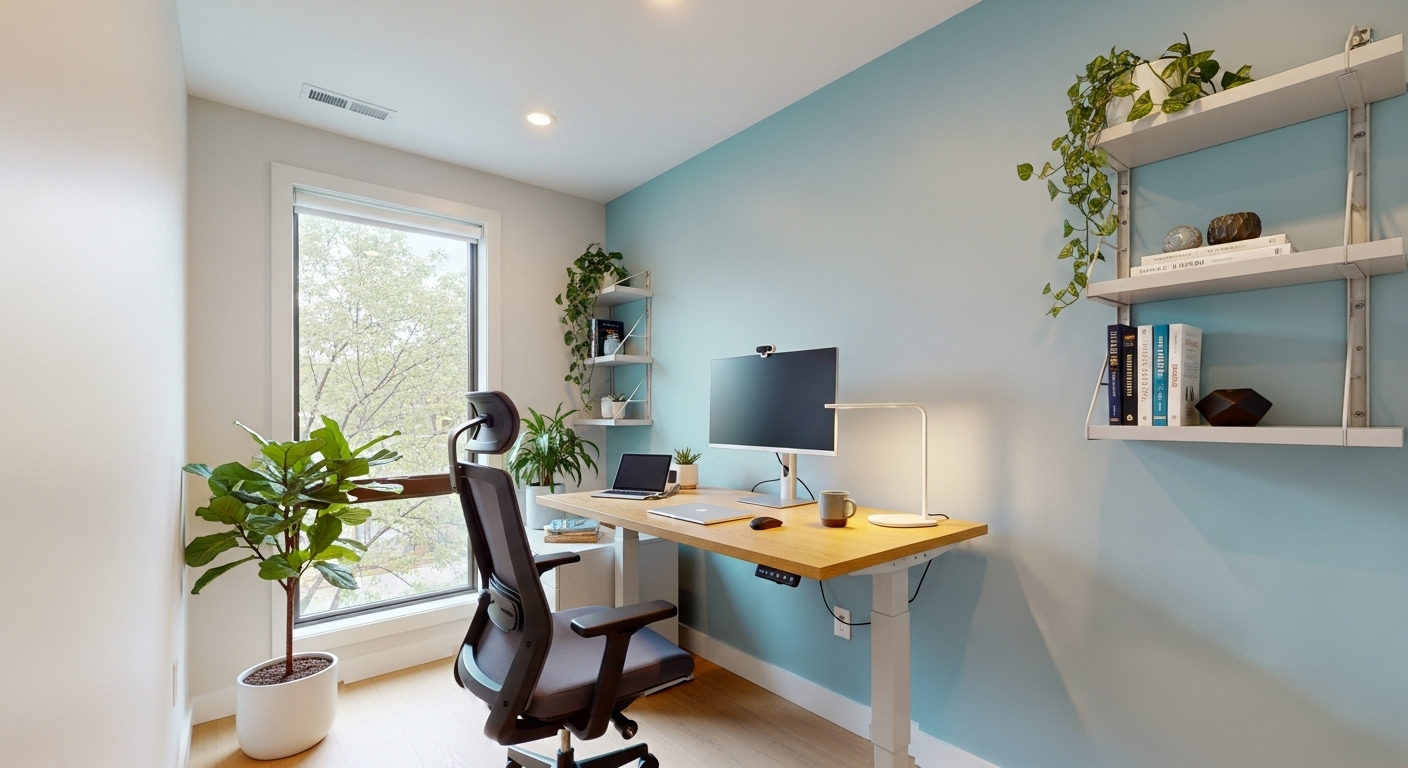The rise of coworking has redefined the professional landscape, offering unparalleled flexibility, community, and access to premium amenities. Yet, this new frontier of work presents a unique paradox: the very environment designed to foster collaboration can sometimes become a hotbed of distraction. For every networking opportunity, there’s a potential interruption; for every vibrant community event, there’s the ambient noise of a busy office. Achieving deep, focused work in such a dynamic setting isn’t a given—it’s a skill. This guide is your blueprint to mastering coworking productivity. We will deconstruct the common challenges of shared workspaces and provide actionable strategies to overcome them. From architecting your personal focus zone and building powerful routines to strategically engaging with the community and leveraging the right technology, you’ll learn how to transform your coworking space from a source of potential chaos into a catalyst for your most productive work yet. Prepare to unlock a new level of efficiency and thrive in the modern professional world.
Architecting Your Focus Zone: Taming the Open Office
The greatest asset of a coworking space—its open, collaborative nature—is also its most significant productivity hurdle. Constant visual and auditory stimuli can fragment your attention, pulling you out of the coveted ‘flow state’. The first step in our blueprint is to consciously engineer a personal bubble of concentration. Your primary tool in this endeavor is a quality pair of noise-canceling headphones. They are the modern professional’s equivalent of a closed door, signaling to others that you are unavailable and muting the ambient chatter that can derail deep thought. However, managing sound is only half the battle. Visual distractions can be just as potent. When choosing your spot for the day, opt for a desk that faces a wall or is tucked into a corner. This simple act minimizes the movement in your peripheral vision, reducing the brain’s tendency to get sidetracked. If you can’t secure a low-traffic spot, consider a portable privacy screen for your desk. These simple dividers can dramatically reduce visual clutter and create a psychological sense of personal space. Your desk setup itself is a critical component of your focus zone. A tidy, organized workspace with only the essentials—laptop, notebook, water—reduces mental load and friction, making it easier to dive into your tasks. A cluttered desk, conversely, is a reflection of a cluttered mind and an open invitation for procrastination.
The Power of Routine: Building Structure in a Flexible World
Flexibility is a major draw of coworking, but a complete lack of structure can be detrimental to productivity. Humans are creatures of habit, and creating routines helps automate decisions, conserve mental energy, and signal to our brains when it’s time to work. Your coworking routine should begin before you even arrive. Create a ‘startup ritual’ that mimics a traditional commute. This could be a short walk, listening to a specific podcast, or grabbing coffee from the same café. This ritual acts as a psychological buffer, transitioning you from home mode to work mode. Once at your desk, implement a structured work method. The Pomodoro Technique, which involves working in focused 25-minute intervals with short breaks, is exceptionally effective in coworking environments. It provides a framework for intense concentration while ensuring you take regular breaks to rest your eyes and mind. Similarly, time-blocking—dedicating specific blocks of time to specific tasks—prevents multitasking and keeps you aligned with your priorities. Don’t forget to schedule your breaks and lunch. In a flexible space, it’s easy to work through lunch or forget to step away. Intentionally scheduling these moments of rest is crucial for maintaining stamina throughout the day. A structured ‘shutdown ritual’ at the end of the day is equally important. Spend the last 15 minutes reviewing your accomplishments, planning the next day’s tasks, and tidying your desk. This provides closure and allows you to mentally ‘check out,’ preventing work from bleeding into your personal time.
Community vs. Concentration: Leveraging the Network Without Losing Your Flow
One of the most celebrated benefits of coworking is the built-in professional network. The space is filled with potential clients, collaborators, and mentors. However, tapping into this community requires a strategic approach to avoid it becoming your biggest time sink. The key is to shift from reactive, random interactions to proactive, scheduled engagement. Instead of letting spontaneous chats dictate your day, designate specific times for socializing. Use your coffee breaks, lunchtime, or the 30 minutes before you leave as your ‘networking window’. During your focused work blocks, remain polite but firm in protecting your time. Keeping your headphones on is a powerful non-verbal cue. If someone approaches you, you can politely say, “It’s great to see you! I’m in the middle of something right now, but could I catch you at lunch?” This validates the person while maintaining your boundary. Furthermore, leverage the formal community events organized by the coworking space. These are designed for networking and are a much more efficient way to meet people than hoping for serendipitous encounters at the water cooler. By being intentional about when and how you engage, you can reap all the benefits of the coworking community without sacrificing the long stretches of uninterrupted concentration needed for high-value work. This balance is critical for long-term success and satisfaction in a shared workspace.
Ergonomics and Well-being: Your Physical Setup for Peak Performance
Your physical comfort is directly linked to your mental focus and productivity. Slouching over a laptop for hours on end not only leads to back pain and fatigue but also drains the mental stamina required for complex tasks. While you may not have control over the desk and chair provided, you can significantly upgrade your ergonomic situation with a few key personal items. A portable laptop stand is non-negotiable. Its purpose is to elevate your screen to eye level, preventing you from hunching over and straining your neck. This single adjustment can revolutionize your comfort. Pair the stand with an external keyboard and mouse. This allows you to position your hands and wrists in a natural, neutral position, reducing the risk of repetitive strain injury. Look for natural light when possible, as it’s proven to boost mood and reduce eye strain compared to harsh fluorescent lighting. Beyond your hardware, pay attention to your body. Set a recurring timer to remind yourself to stand up, stretch, and walk around for a few minutes every hour. Staying hydrated is also crucial for maintaining cognitive function, so keep a large water bottle on your desk as a visual reminder. Investing in your physical well-being is not an indulgence; it’s a core component of sustainable productivity. When your body is comfortable and supported, your mind is free to operate at its peak, allowing you to work longer and more effectively without burnout.
The Digital Toolkit: Essential Apps and Tech for Coworking Success
While physical tools and routines are vital, a well-curated digital toolkit can provide the final layer of your productivity shield. The right technology can help you stay organized, communicate efficiently, and block out digital distractions that are just as pernicious as physical ones. Start with a robust task management system. Apps like Asana, Trello, or Todoist allow you to capture, organize, and prioritize your tasks, providing a clear roadmap for your day and preventing you from feeling overwhelmed. This is especially important in a dynamic environment where new ideas and requests can emerge unexpectedly. For team collaboration, use designated communication platforms like Slack or Microsoft Teams. These tools centralize conversations and file sharing, reducing the need for disruptive in-person check-ins and creating a searchable record of all project-related communication. Perhaps most critically for a coworking environment, embrace focus applications. Tools like Freedom or Cold Turkey can block distracting websites and apps for set periods, creating an impenetrable digital fortress around your work. For those who find silence unsettling but music distracting, ambient sound apps like myNoise or Brain.fm can generate background noise—like rain, a café, or white noise—that masks distracting office sounds and promotes concentration. By thoughtfully integrating these digital tools, you create a seamless workflow that supports deep work, streamlines collaboration, and keeps you laser-focused on your most important objectives, regardless of the activity happening around you.
Mind Over Matter: The Psychology of Coworking Productivity
Ultimately, mastering productivity in a coworking space is a mental game. You can have the best headphones, routines, and tools, but if your mindset isn’t aligned, you’ll still struggle. One of the most powerful psychological phenomena at play in a coworking space is ‘social facilitation’ or the ‘body doubling’ effect. This is the idea that simply being in the presence of others who are also working can increase your own motivation and focus. By consciously tapping into this ambient productivity, you can use the environment to your advantage. Seeing others diligently typing away can serve as a powerful, silent motivator to stay on task yourself. Another psychological hurdle is goal clarity. In a self-directed environment, it’s easy to drift without clear objectives. Begin each day by defining your top one to three priorities—the tasks that, if completed, would make the day a success. Writing these down provides a north star, making it easier to fend off distractions and say no to low-value activities. Finally, practice mindfulness to manage the inevitable internal and external distractions. When you feel your attention wandering, simply acknowledge it without judgment and gently guide your focus back to your task. This mental muscle, like any other, gets stronger with practice. By understanding and harnessing these psychological drivers, you can cultivate the internal discipline needed to not just survive but truly excel in the freedom and dynamism of a shared workspace.
Conclusion
The transition to a coworking space represents a significant shift in how we work, offering a blend of autonomy and community that can be incredibly powerful. However, unlocking its full potential requires a conscious and strategic approach. True coworking productivity is not found, but built. It is constructed from a blueprint that begins with architecting a physical and digital zone of focus, actively taming the distractions inherent in an open environment. It is reinforced by the bedrock of personal routines, which provide structure and mental cues in a world of flexibility. This structure allows you to strategically engage with the vibrant community, turning potential interruptions into valuable connections. It is sustained by prioritizing your physical well-being through smart ergonomics and supported by a digital toolkit that streamlines workflow and silences digital noise. Above all, it is driven by a resilient mindset that understands how to harness the psychology of a shared environment for personal motivation. By implementing this blueprint, you move from being a passive occupant of a shared space to an active architect of your own productivity. You take control, transforming potential chaos into focused energy and unlocking a new level of professional achievement in the workplace of the future.





